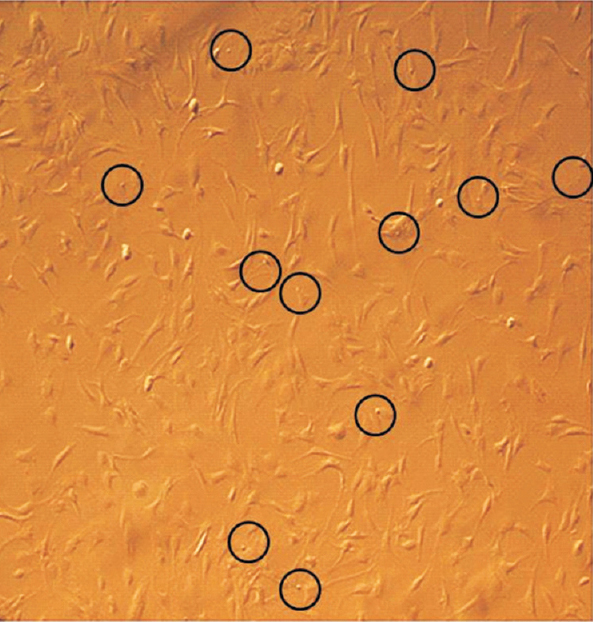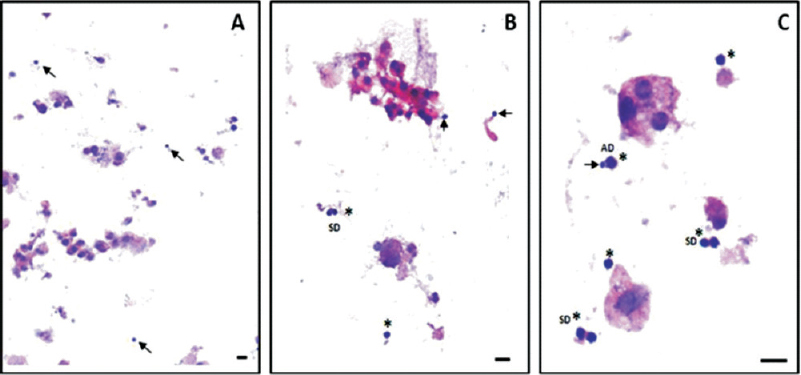Translate this page into:
Is the improved function of streptozotocin treated pancreas truly due to transdifferentiation/fusion of transplanted MSCs?
This is an open access article distributed under the terms of the Creative Commons Attribution NonCommercial ShareAlike 3.0 License, which allows others to remix, tweak, and build upon the work non commercially, as long as the author is credited and the new creations are licensed under the identical terms.
This article was originally published by Medknow Publications & Media Pvt Ltd and was migrated to Scientific Scholar after the change of Publisher.
Sir
I read with interest the article by Bhansali et al1 where beneficial effects of transplanting mesenchymal stem cells (MSCs) by tail vein injection in streptozotocin (STZ) treated rats were reported. Similar beneficial effects have been earlier reported by the same group after autologous bone marrow transplantation in patients with type 2 diabetes mellitus (T2DM)2.
The authors are requested to observe carefully Figure 1 of their article copied below (Fig. 1). It clearly shows presence of a sub-population of very small embryonic-like stem cells (VSELs) in MSCs culture (circled) implying that a mix of MSCs and VSELs existed in their cultures. It was not clear from the information provided1 as to what passage cells were shown in the Figure and whether these cells were transplanted. The VSELs are observed very clearly in primary cultures and tend to get reduced in subsequent passages but these cells exist and also survive within the MSCs by a process termed ‘emperopolesis’3. We have earlier discussed about the presence of VSELs as a sub-population among MSCs4 and how OCT-4 (octamer-binding transcription factor-4) staining can differentiate these from each other. We have shown presence of VSELs in Haematoxylin and Eosin (H&E) stained smears prepared by enzymatically digesting mouse pancreas (Fig. 2), characterized them and demonstrated how these are involved in regeneration of mice pancreas after more than 70 per cent of pancreas is surgically removed5. Nuclear OCT-4 positive VSELs differentiated into cells (pancreas specific progenitors) with cytoplasmic OCT-4 which co-expressed pancreatic and duodenal homeobox-1 transcription factor (PDX-1)5. Our results are in agreement with earlier reports where Ratajczak's group has reported a possible role for VSELs to improve pancreatic function after bone marrow transplantation (BMT)6 and also demonstrated an increased mobilization of VSELs in patients with pancreatic cancer7. Whenever the pancreas function gets compromised, e.g. by pancreatectomy or by STZ treatment, VSELs get mobilized from the bone marrow and rush to the damaged pancreas in order to regenerate it. We have observed 6-folds increase in numbers of VSELs in pancreas of STZ treated mouse compared to normal control mouse pancreas (unpublished observations). Similar mobilization and a role of VSELs during hepatic regeneration was recently reported by Chen et al8. Two other groups910 have also reported presence of nuclear OCT-4 positive, very small sized cells in human pancreas (although they have not named them as VSELs).

- This is Figure 1 of the article by Bhansali et al1 showing VSELs (encircled) which have been missed out possibly because of the very small size. These cells have been ignored till now but are pluripotent stem cells that survive in various adult tissues throughout life. Source: Ref. 1 (Reproduced with permission).

- Haematoxylin & Eosin (H&E) stained smears of cells from normal mouse pancreas to appreciate the very small size of VSELs (arrow) at 10X, 20X and 40X. Cells marked in asterix are the pancreas specific progenitors. Source: Ref. 5 (Reproduced with permission).
The increase in numbers of islets in the transplanted group observed in the study1 is impressive but this may be due to differentiation of endogenous VSELs. It could be possible that STZ treatment mobilized VSELs into the rat pancreas which differentiated into islets. This was facilitated by the presence of healthy MSCs which were transplanted and acted as a source of growth factors. MSCs do not transdifferentiate into islets and this has been mentioned by the authors1 in their introduction. In a recent review we have discussed how VSELs have remained elusive till date and missed by various investigators because of their very small size and presence in very few numbers11.
We agree that transplanting MSCs will have a crucial role for regenerative medicine but it is important to first understand basic stem cells biology and recognize presence of VSELs in various adult tissues. Direct inter-tubular injection of Sertoli/mesenchymal cells in chemoablated (25mg/kg busulphan) mouse testis restored spermatogenesis12 from VSELs that survived due to their relatively quiescent nature. This was confirmed by the observation that transplanting green fluorescent protein (GFP) positive Sertoli/mesenchymal cells yielded non-green sperm12. Further, a direct transplantation of MSCs in a diabetic mouse pancreas may be a better option than tail vein injection used by the authors1.
Conflicts of Interest: None.
References
- Effect of mesenchymal stem cells transplantation on glycaemic profile & their localization in streptozotocin induced diabetic Wistar rats. Indian J Med Res. 2015;142:63-71.
- [Google Scholar]
- Efficacy of autologous bone marrow derived stem cell transplantation in patients with type 2 diabetes mellitus. Stem Cells Dev. 2009;18:1407-16.
- [Google Scholar]
- Identification of very small embryonic like (VSEL) stem cells in bone marrow. Cell Tissue Res. 2008;331:125-34.
- [Google Scholar]
- Are mesenchymal cells indeed pluripotent stem cells or just stromal cells?. OCT-4 and VSELs biology has led to better understanding. Stem Cells Int 2013 2013:547501.
- [Google Scholar]
- Very small embryonic-like stem cells are involved in regeneration of mouse pancreas post-pancreatectomy. Stem Cell Res Ther. 2014;5:106-17.
- [Google Scholar]
- An intensified systemic trafficking of bone marrow-derived stem/progenitor cells in patients with pancreatic cancer. J Cell Mol Med. 2013;17:792-9.
- [Google Scholar]
- Bone marrow transplantation temporarily improves pancreatic function in streptozotocin-induced diabetes: potential involvement of very small embryonic-like cells. Transplantation. 2010;89:677-85.
- [Google Scholar]
- Hepatic regenerative potential of mouse bone marrow very small embryonic-like stem cells. J Cell Physiol. 2015;230:1852-61.
- [Google Scholar]
- Evidence for the presence of stem cell-like progenitor cells in human adult pancreas. J Endocrinol. 2007;195:407-14.
- [Google Scholar]
- Pluripotency-associated stem cell marker expression in proliferative cell cultures derived from adult human pancreas. J Endocrinol. 2011;211:169-76.
- [Google Scholar]
- Very small embryonic-like stem cells are involved in pancreatic regeneration and their dysfunction with age may lead to diabetes and cancer. Stem Cell Res Ther. 2015;6:96-102.
- [Google Scholar]
- Very small embryonic-like stem cells survive and restore spermatogenesis after busulphan treatment in mouse testis. J Stem Cell Res Ther. 2014;4:216.
- [Google Scholar]





